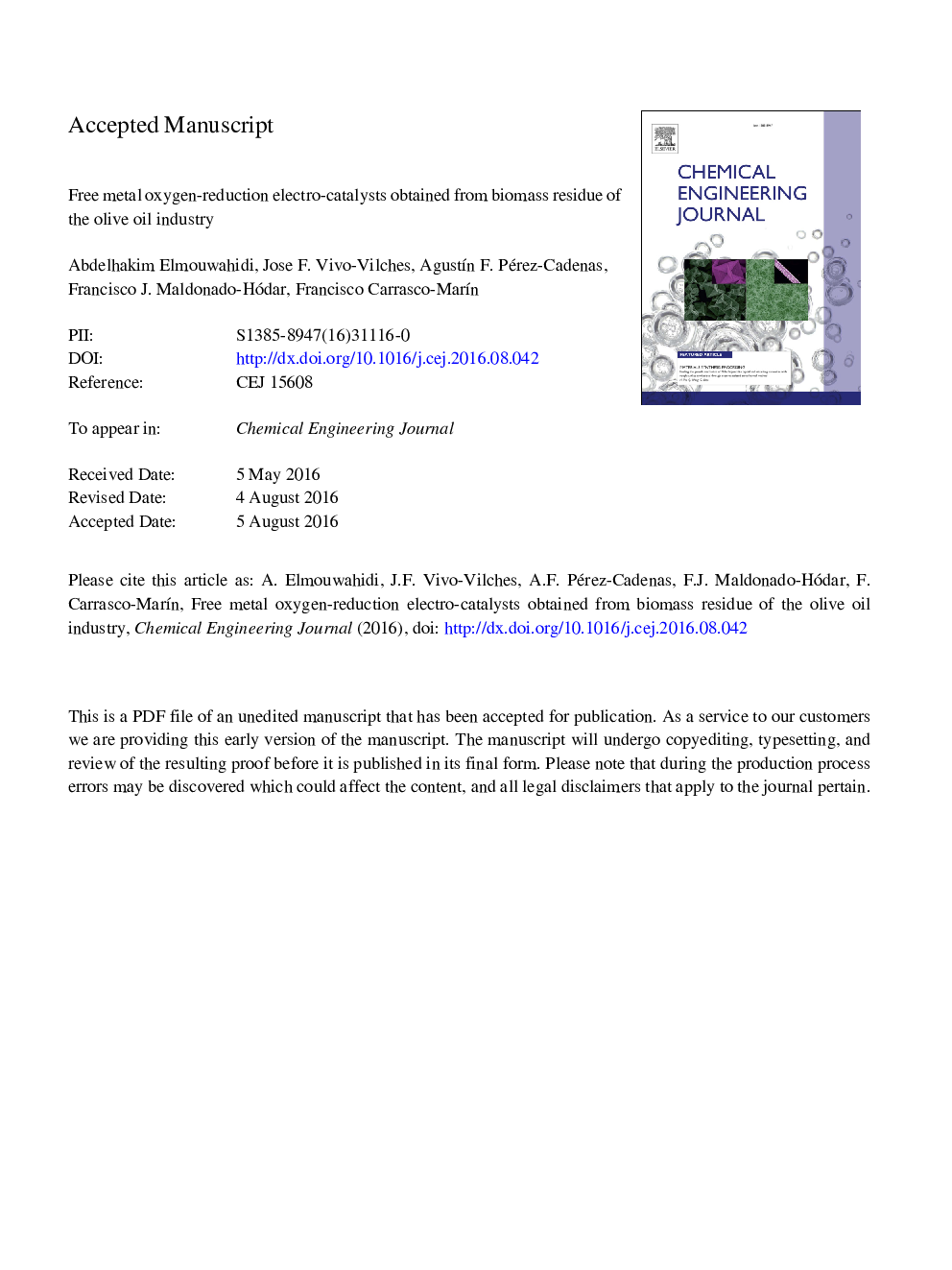| Article ID | Journal | Published Year | Pages | File Type |
|---|---|---|---|---|
| 6581301 | Chemical Engineering Journal | 2016 | 27 Pages |
Abstract
Advanced carbon materials are obtained from a solid residue of waste water used in the olive oil industry. Solvothermal treatments with different amounts of thioglycolic acid are carried out in order to develop specific sulphur functionalities on the carbon surface. Samples are exhaustively characterized to determine the textural, chemical and electrochemical properties. These materials are tested as electro-catalysts for oxygen reduction reaction in a three electrode electrochemical set-up. Correlations between the characteristics of the carbons and their electrochemical performance are established. Electrodes containing sulphur functionalities show a very good electro-catalytic behaviour with larger kinetic current densities and lower activation potentials. Linear Sweep Voltammetry is performed at different rotation speeds in order to calculate the number of electrons transferred and kinetic current densities by applying Koutecky-Levich equation. Thus, it is pointed out that oxygen reduction takes place through the desired four electrons pathway on the sulphur doped electro-catalysts. These carbon materials show a similar catalytic performance to that of other free-metal electro-catalysts based in graphene recently reported in the bibliography.
Related Topics
Physical Sciences and Engineering
Chemical Engineering
Chemical Engineering (General)
Authors
Abdelhakim Elmouwahidi, Jose F. Vivo-Vilches, AgustÃn F. Pérez-Cadenas, Francisco J. Maldonado-Hódar, Francisco Carrasco-MarÃn,
